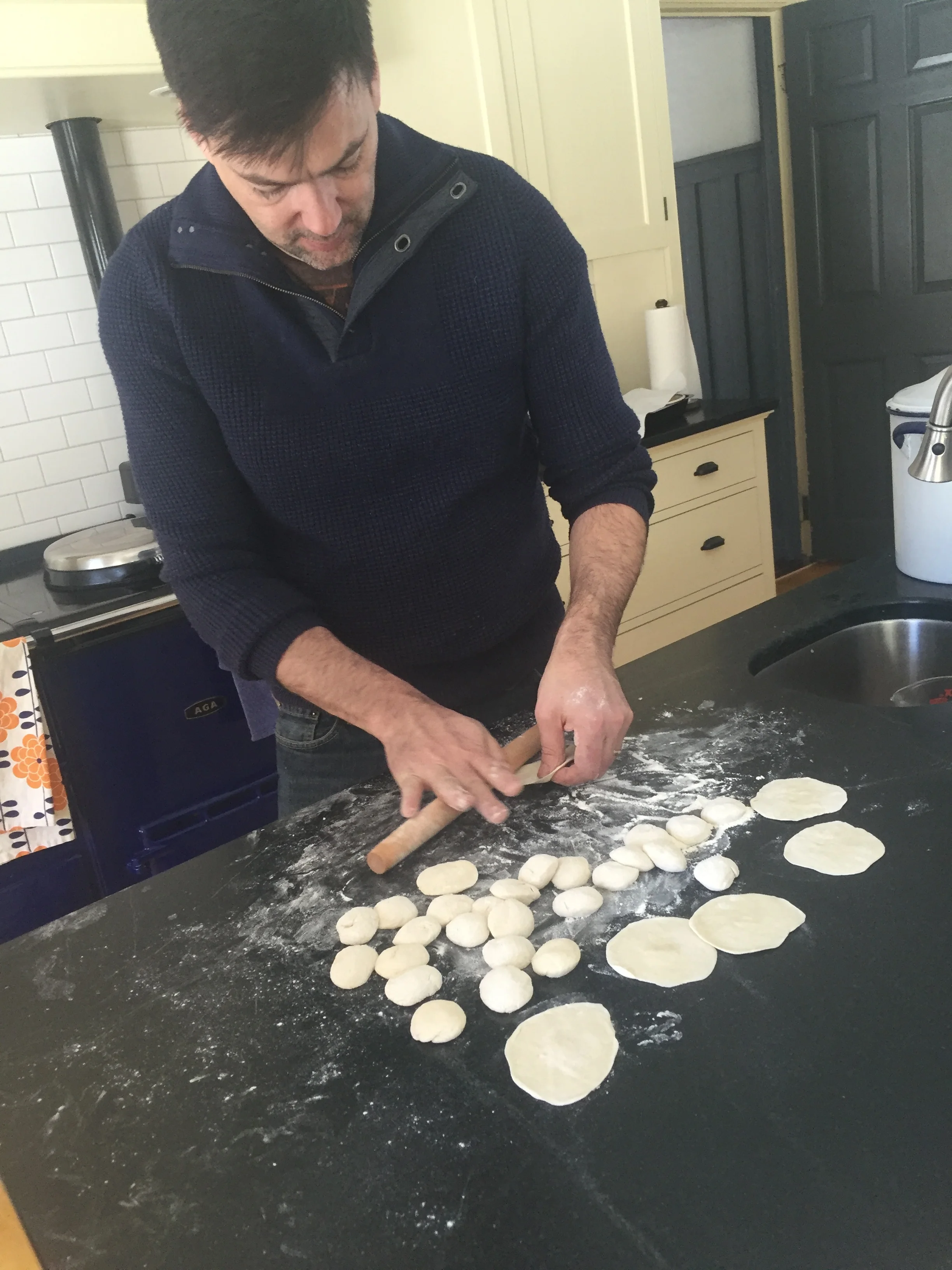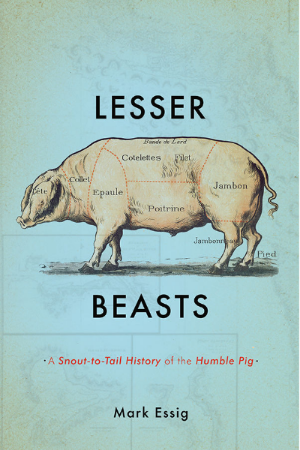A lesson in dumplings
/Since Snowpocalypse 2016 decided to stick it to our more southerly neighbors this weekend, we took advantage of the time to get together with one of our dear friends who has been promising for years to teach us to make traditional Chinese dumplings.
I have long considered myself something of a connoisseur of dumplings. I try them at nearly every restaurant or opportunity I get. But my expertise only extends to the eating half of the work. I've certainly never made them from scratch, and was at somewhat of a loss as how to start. Our friend asked what kind I liked to eat (since that is apparently where my expertise stops). I like the pork & cabbage variety best.
During our conversation about what ingredients we needed to make sure we had on hand, I asked her if she used the frozen dumpling wrappers you can buy at the Asian market. I thought I was being pretty suave demonstrating that I even knew that there was such a thing as frozen dumpling wrappers. She made a face, and shook her head at me.
"No. We will start by making the dough."
Um. Ok. What goes into the dough? I was imagining a special trip to get the ingredients from New York.
Nope. Just all purpose flour and water.
"Really? Just all purpose flour? Like.. the all purpose flour I buy all the time?"
"What did you think it was?"
"Well.. I don't know. Magical dumpling flour?"
That prompted another 'are you ok?' face. I quickly moved on.
"OK. How much do you put in?"
"Enough for how many dumplings you want to make."
Well yeah. That makes sense, I suppose.
A lot of the directions took this form. There was very little measuring involved. It was done by feel, or heft, or my favorite - by smell.
The dough was rolled and kneaded until it was quite firm. Just room temperature water, and what I think was about 4 or so cups of flour. But maybe it was 5. Whatever it was, it was 'enough'.
"How much salt do you add to the meat?"
"Until it smells like it is the right amount."
The ingredients were simple:
- Ground pork (I ground it this morning from sausage trim left from on of our pigs. This was was named Rocky). We used about 2 lbs.
- Chopped ginger - only about a half a thumb's worth, chopped fine
- Chopped onion - only because I forgot to go buy scallions. I used one onion, and tossed it through the grinder at the end (a good way to push the last meat through the grinder as well). If you were using scallions, you should chop 4 or 5 very fine
- Chopped cabbage. I used about 3/4 head of a Savoy cabbage, as it's leafier and closer to Chinese cabbage. I chopped up about a quarter of it, and was told "finer". When I got the consistency right, our friend said "Good. Now chop more."
- A tablespoon or so of white sugar.
- Sesame oil. Just a few drops.
- Canola oil. Maybe an 1/4 cup, divided into two parts.
- Salt & white pepper
When our friend asked for chopsticks to stir the meat, I whipped out a pair I had bought on a whim a few years ago at an Asian market. "I will use these for stir fry's!" I declared. Which I did. Once. They have rested in our drawer from that moment until today. I was rather smug at how my laziness made me look rather clever and worldly when I could produce them on demand.
Our friend carefully mixed everything together until smooth.
The ginger, pork, salt & pepper were stirred together with the sesame oil and half the canola oil.
'Don't mix the salt & pepper in with the vegetables. It will leach the water out.'
The rest of the oil was mixed in with the cabbage (and scallions if you've added). And only then was everything mixed together. She would pause and smell the mixture occasionally to determine if the flavors were right. If it wasn't salty enough, you wouldn't smell the sesame correctly, she said.
When she said it was good, I leaned over the bowl and smelled the meat before nodding sagely.
With the dough done resting, we began to roll it out and chop it into the small balls for each dumpling. I got pretty ok at this part, though I was not nearly as fast as my teacher, who could whip out a flat, perfectly circular dumpling wrapper in about 4 seconds.
It's a two handed exercise - one hand on the rolling pin, and one on the ball of dough, stretching and spinning it a little as you go, leaving a little hump of thicker dough in the middle.
With a few done, we started on the really hard part: stuffing and folding them.
Each took a healthy tablespoon of filling, and with some magical twisting and finger sorcery, out popped a perfectly formed dumpling.
Not a "that looks pretty good" dumpling (which is about as well as I ever managed). But a "looks like it just came out of the restaurant kitchen professional level" dumpling.
She tried to teach me several times, and my big clumsy fingers managed to sort of get the knack. My Bride, on the other hand, managed pretty well after a couple of pointers.
We even had the Critter trying.
Even with a lot of practice, you could tell which were made by whom, when they lined up on the board.
We may, or may not have gotten a little competitive over whose looked better.
I'll save you from guessing. These weren't mine.
Once we had enough ready, we started test boiling a few.
"How long will they boil?"
"Put them in the water, and then let the water come back to a boil. Then add water again so it stops boiling, and let it come back to a full boil. Do that three times."
Wait... um. What?
I had to stop and replay that in my head, before I could make it out. But you know what? That totally worked. They came out perfectly done, with the great quality meat and the light, vegetable notes of the cabbage and spices all perfectly balanced.
We served them with a dipping sauce made from lots of finely minced garlic, soy sauce and chili vinegar. When making this at home yourself, use more vinegar than soy sauce.
I ate so many that I felt stuffed like a dumpling myself.
Not only were they absolutely amazing, but it was so much fun to be taught by our friend to make something her mom and grandmother had taught her (even if she did laugh herself silly at my antics trying to make my dumplings look reasonably similar to her professional ones). A wonderful way to spend a Sunday afternoon.
Only two weeks until Chinese New Year's, when dumplings are a traditional food. I think this year, we'll be able to celebrate in style!



















